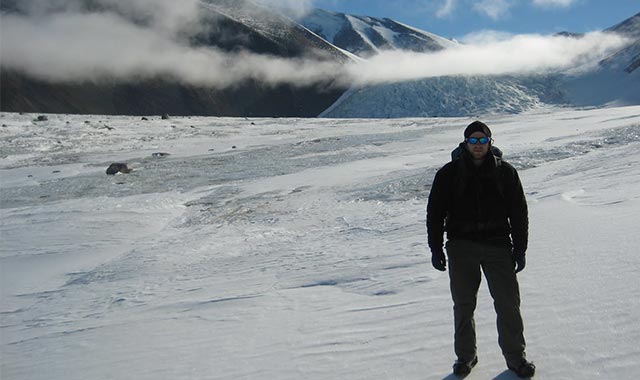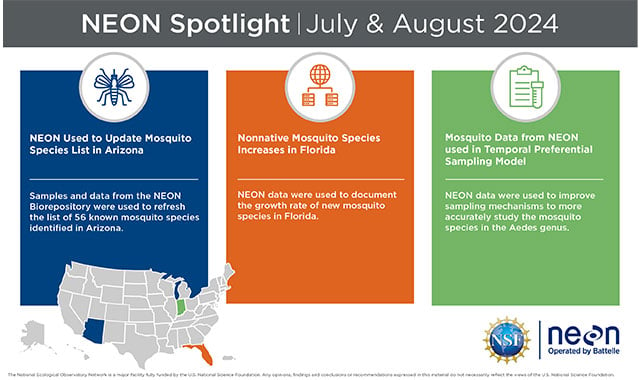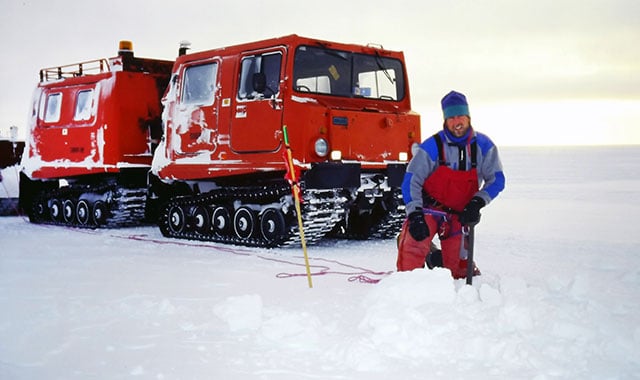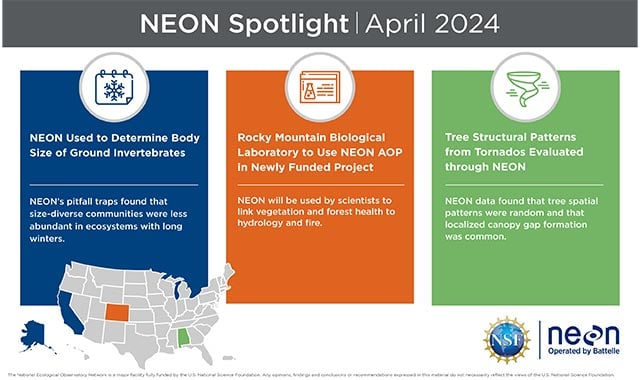Polar Tech Development Brings Battelle Duo to the Arctic
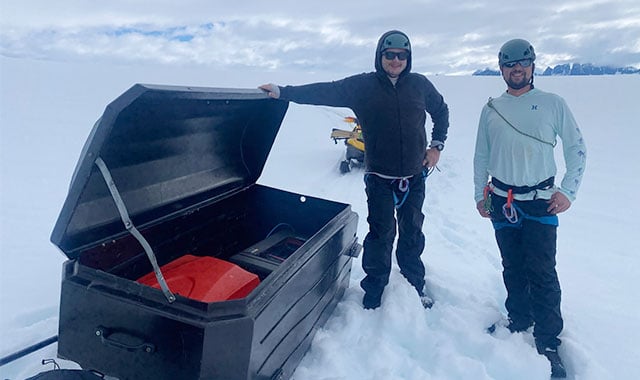
When Andrew Matas (above left) was growing up in Pennsylvania, Matt Zeglen (above right) was doing the same in Ohio. Neither of the Battelle employees, Matas, the data scientist, nor Zeglen, the robotics engineer, anticipated a science career that would take them to the Arctic, but yet in June, the pair found themselves hiking on glacial ice in Alaska with the Juneau Icefield Research Program (JIRP).
Why would two people who typically work indoors be out in such a place? Because at Battelle, we invent all kinds of things to help the world be a better, safer place—and sometimes we get to test the invention where it’s going to be used. That means going to remote places like the Arctic.
We’ve all seen the movie—the camera pans across a frozen tundra, focusing in on a polar research team trekking in single file. The tough guy’s clever dog races ahead, sniffing for cracks in the ice and snow. The dog stops, hackles up, causing the intrepid crew to stop in its tracks. A hidden crevasse lies under the pristine snow, a hidden threat that could lead to a disastrous fall.
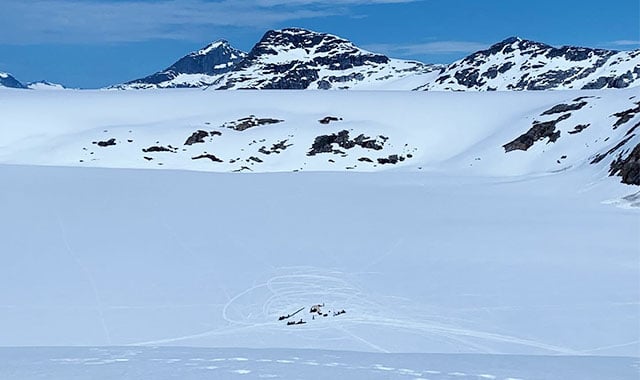
Battelle’s researchers and others are pictured here at work in the field with the Juneau Icefield Research Program, dwarfed by Alaska’s immense landscape.
In reality, people in polar regions have been using ground penetrating radar for finding crevasses for 70 years, but when people have to map the ground before they arrive, there is vast room for improvement. Matas and Zeglen were recruited to a Battelle team working on polar technology after learning of needs from ecologists in polar locations associated with Seth Campbell and the University of Maine as well as Battelle’s Arctic Research Operations. It’s part of the strength of Battelle’s organization—groups of scientists and engineers can be assembled in short order to attack a problem. In this case, the project is working on a robotic replacement for the fantasy dog described above.
Glaciers are not static structures. They move and change below new layers of snow piled upon them, with bridges forming over open caverns that can be safe to walk on for long periods of time, before suddenly becoming hazardous. As snow melts and seasons change and global warming sculpts new landscapes, the terrain can change drastically in just a few weeks. An ever-growing number of researchers are visiting the world’s poles for research, creating more chances of safety issues.
Much polar research travel is on foot or by snowmobile, and in the Antarctic (a much larger place than its Arctic counterpart), that can mean 10 hours on the open snow. Fatigue becomes a factor and having a real-time safety alert system would mean greater safety. “The environment is constantly changing,” said Matas.
“We want to make polar research safer for those people who are there. Even if it’s safe one day, it could change the next day. We had a lake drain overnight while we were there. The environment changed immediately.”
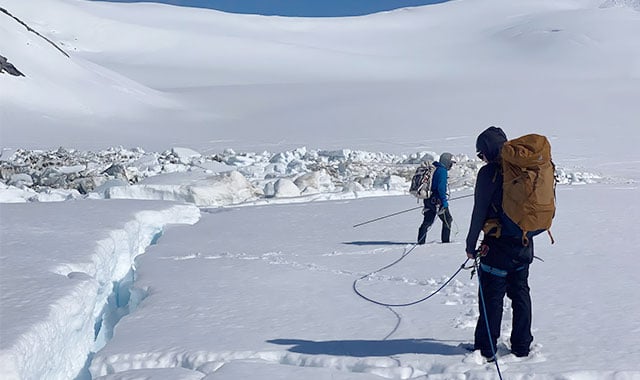
Exploring crevasses and testing Battelle equipment during the recent field deployment could make polar research safer in the future.
Back in Columbus before their summer trip, the two wondered about their lack of experience in harsh conditions. “I didn’t have the right clothes,” said Matas. “All my T-shirts were cotton and you need nylon and polyester wicking material, so I had to get new ones. And, I didn’t own an ice axe.”
The two met up with Campbell, director of JIRP, and other safety staff who helped them learn to work with the data they were collecting. “They provided the safety training and they sent safety experts with us,” said Zeglen. “Seth is a mountaineer, so he taught us a lot of things that were useful in conserving energy.”
The field test on crevasse detection technology, a product of Battelle’s internal research and development program designed in part to create value for customers’ future needs, called for them to interface with an existing team at JIRP. Because Zeglen has experience with hardware, he was on the team to assemble an array that’s never been created until now. “The puzzle box wasn’t there, nor there the things that went in it,” he said. “We had to find the pieces and put them together.”
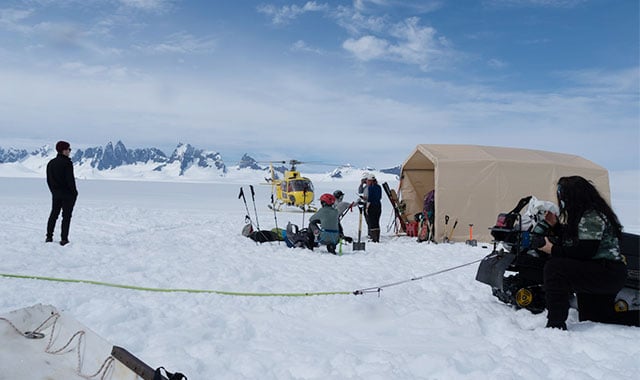
Helicopters play a key role in resupplying research crews in polar research.
Matas, who worked previously measuring gravitational waves as well as real-time data processing projects at Battelle, made him a great choice to deal with the constant stream of data. “It’s hard for a person to continuously monitor the data in real time. Instead of having a person interpret it, we would like to use artificial intelligence” he said. “Instead of having a person interpret it, we have other robots. We’re trying to reduce the cognitive load for the users.”
The pair collected information on about 100 kilometers of trails around the Juneau Icefield greatly increasing their data set and helping to fine tune the algorithm and system. Other realities were more eye-opening during their two weeks in the field.
“We didn’t get to shower at all,” said Zeglen, adding that the hygiene option was there if one likes a snow bath.
Camp life and adjusting to living with strangers in a stressful environment is a big part of learning to do polar research. “There’s a large community aspect to it,” Zeglen said. “It’s a ‘together or die’ mentality, like living in the early 1800s except you have a lot of technology. There were 17 people there and we shared meals and everyone contributed.”
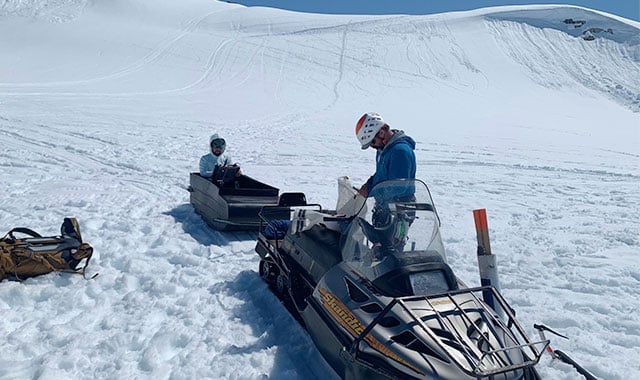
The Battelle researchers and others used a variety of methods to test their equipment and collected information on about 100 kilometers of trails around the Juneau Icefield.
They were welcomed with a JIRP tradition, a viewing of the aforementioned John Carpenter’s movie “The Thing” with that dog on the ice, a portion of which was filmed in the area. Aside from that mild inculcation, the experience of a freezing camp with a dormitory glow was an opportunity the two found invigorating. “Everyone was so friendly and supportive,” Matas said. “We talked a lot about camp safety and respect.”
Conditions required some toughness. “My feet were wet a lot, my bed was hard, there was no TV,” Matas said. “But I didn’t really even notice those things. The days were so full of activity and science and camaraderie. The beauty of it all is overwhelming. You can see the moon and sun at the same time and it’s huge. It feels very connected to nature.”
There are no Uber Eats deliveries at the JIRP. “You are taking care of everything yourself,” Zeglen said. “In terms of food, you have to work with what you have. You’ve got an ice box, but there isn’t a lot of fresh stuff. You have to be resourceful. Even the idea of washing dishes is reimagined. There’s no running water. We relied on snowmelt as our water source.”
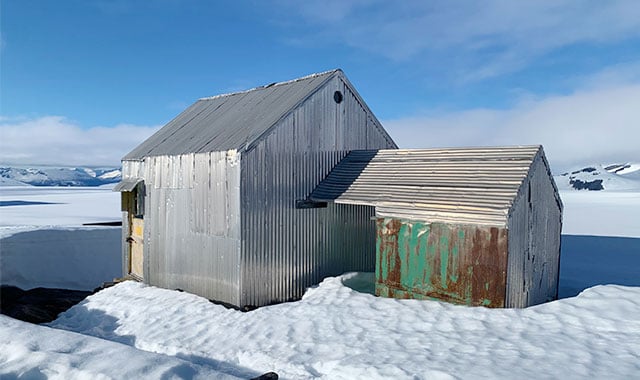
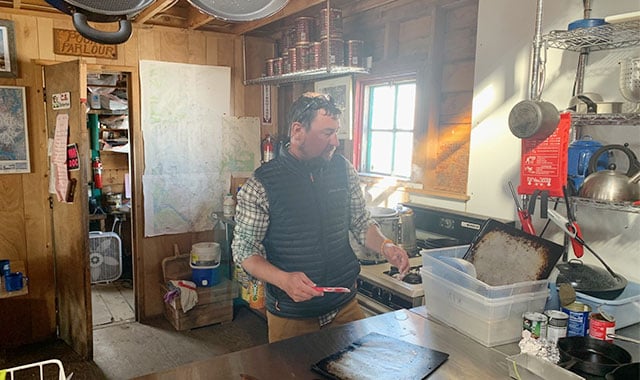
Camp accommodations on the Juneau Icefield are spartan.
Camp was equipped with two propane stoves and generators used sparingly in the evenings, and no cell service. A recent Starlink addition meant they had internet service. “But there is nothing there,” said Zeglen. “A little tiny bit of green stuff coming up through the melting snow. You rely on what’s shipped in.”
All in all, it was an experience both men say they treasure. “I am absolutely glad I went,” said Matas. “I was scared. I didn’t know what to expect. It was an amazing experience. It’s so surreal to walk around there on snow no one’s ever walked on. The scale of the place is mind blowing.”
To see more photos from Matt and Andrew's time in the JIRP, click here.
Related Blogs
BATTELLE UPDATES
Receive updates from Battelle for an all-access pass to the incredible work of Battelle researchers.

